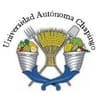Efecto del manejo integrado de tetranychus pacificus en la producción de Citrus Aurantifolia en Guerrero, México
ABSTRACT
Objetive: Identify the losses of lemon production in the state of Guerrero, and the low quality of the fruit and give the solution to that agent causing low citrus yields, different treatments were evaluated as cultural practices and chemical method for their control of the pest.
Design/methodology/approach: In the chemical control, abamectin, azadirachtin, citroline (250 ml) was applied, all compared with part of the control plantations, without any application of the technology.
The variables that were evaluated were the yield of the fruit damages per tree and the healthy ones to lead to a determination of the profitability within the citrus industry. Yields (Kg ha -1). The quantifications of the yields were made at the beginning of the study, after application of the treatments the damaged and healthy fruits of each one of the repetitions were quantified, these were carried out from March to July. Same that were analyzed statistically, to perform the analysis of variance with respect to healthy and damaged fruits. In profitability (R B / C). The benefits / costs of production relationships there included the costs of agrochemicals.
Results: the effects of the treatments are shown in terms of costs and profitability of the Mexican lemon crop in Guerrero, with the three different technologies and with the obtaining of healthy products. The greatest profitability will be with the application of cultural practices, and the next one is with the growth regulators and in the latter case the witness has no profitability due to the fact that there are large infestations of the mite allowing its stadiums to develop rapidly due to the conditions Abiotic.
Limitations on study/implications: there was no agreement implication to carry out the evaluation of the control of the mite in lemon in the state of Guerrero.
Findings/conclusions: The integrated management was very effective with the use of cultural practices and the use of development regulators reduced losses by 2% and the fruits had very good external appearances and in question of the witness there is no profitability because this mite plague causes losses in respect to crop yields, the solution would be to use or apply genetic improvement technologies so that resistance to this pest is obtained, which affects the quality of the fruit to take it to market to a local, national or local market. export the following recommendation goes to the producers of large extensions that are dedicated to citrus and are affected in relation benefits and costs; The most effective is to use pruning, which generates more fruiting points in citrus trees and thus increasing yields and helping to avoid infestation of pests and diseases with variations of abiotic conditions.
Keywords: Tetranychus pacificus, Citrus aurantifolia, integrated management.
RESUMEN
Objetivo: Identificar las pérdidas de producción de limón en el estado de Guerrero y la baja calidad de la fruta y dar la solución a ese agente que causa bajos rendimientos de cítricos, se evaluaron diferentes tratamientos como prácticas culturales y método químico para su control de la plaga.
Diseño / metodología / enfoque: En el control químico, se aplicó abamectina, azadiractina, citrolina (250 ml), todo en comparación con parte de las plantaciones de control, sin ninguna aplicación de la tecnología.
Las variables que se evaluaron fueron el rendimiento de los daños a la fruta por árbol y los saludables para conducir a una determinación de la rentabilidad dentro de la industria de los cítricos. Rendimientos (Kg ha -1). Las cuantificaciones de los rendimientos se realizaron al inicio del estudio, luego de la aplicación de los tratamientos se cuantificaron las frutas dañadas y sanas de cada una de las repeticiones, que se llevaron a cabo de marzo a julio. Lo mismo que se analizó estadísticamente, para realizar el análisis de varianza con respecto a frutos sanos y dañados. En rentabilidad (R B / C). Los beneficios / costos de las relaciones de producción allí incluyeron los costos de los agroquímicos.
Resultados: los efectos de los tratamientos se muestran en términos de costos y rentabilidad de la cosecha mexicana de limón en Guerrero, con las tres tecnologías diferentes y con la obtención de productos saludables. La mayor rentabilidad será con la aplicación de prácticas culturales, y la próxima será con los reguladores del crecimiento y, en este último caso, el testigo no tiene rentabilidad debido al hecho de que hay grandes infestaciones de ácaros que permiten que sus estadios se desarrollen rápidamente debido a las condiciones abióticas.
Limitaciones en el estudio / implicaciones: no hubo implicación de acuerdo para llevar a cabo la evaluación del control del ácaro en el limón en el estado de Guerrero.
Hallazgos / conclusiones: El manejo integrado fue muy efectivo con el uso de prácticas culturales y el uso de reguladores de desarrollo redujo las pérdidas en un 2% y los frutos tuvieron muy buenas apariencias externas y en cuestión del testigo no hay rentabilidad porque esta plaga de ácaros causa pérdidas con respecto a los rendimientos de los cultivos, la solución sería utilizar o aplicar tecnologías de mejora genética para que se obtenga resistencia a esta plaga, lo que afecta la calidad de la fruta para llevarla al mercado a un mercado local, nacional o local. Exportar la siguiente recomendación va a los productores de grandes extensiones que se dedican a los cítricos y se ven afectados en relación con los beneficios y costos; Lo más efectivo es utilizar la poda, que genera más puntos de fructificación en los cítricos y, por lo tanto, aumenta el rendimiento y ayuda a evitar la infestación de plagas y enfermedades con variaciones de las condiciones abióticas.
Palabras claves: Tetranychus pacificus, Citrus aurantifolia, Manejo integrado.
|
|
|
|

(Ubicación del municipio de Coyuca de Benítez, Gro)
Resultados y Discusión




CP= Costo de productos
CPD = Costos de producción
VDP= Valor de Producción
RB/C= Relación Beneficio/Costo
Conclusiones
Literatura Citada
- Ariza-Flores, R., R. Cruzaley S., E. Vázquez G. 2003. Uso de labores culturales en la inducción floral y producción del limón mexicano de invierno en Guerrero.
- Ariza-Flores, R., R. Cruzaley S., M. Herrera G. 2003. Bioestimulantes y fitohormonas de crecimiento en la inducción floral y producción del limón mexicano de invierno en Guerrero. Notas científicas. Chapingo, México. Pag. 335.
- BULLOCK, R. C.; PELOSI, R. R. 1996. Efficacy of Imidacloprid vs Citrus leafminer (CLM), Phyllocnistis citrella Stainton, In Florida, USA. Proc. Int. Soc. Citriculture: 536-541.
- Curti-Díaz, S.A., Loredo-Salazar, X., Díaz-Zorrilla, U., Sandoval-Rincón, J.A., Hernández Hernández, J. 2000. Tecnología para producir limón Persa. Libro Técnico Núm. 8. Campo Experimental Ixtacuaco. INIFAP-CIRGOC. México. 145p
- KRANTZ, G.W. A manual of Acarology. Second edition. Oregon: Oregon State University Book Stores, 1978. 509 p.




Estados Unidos de América


Estados Unidos de América


Estados Unidos de América




